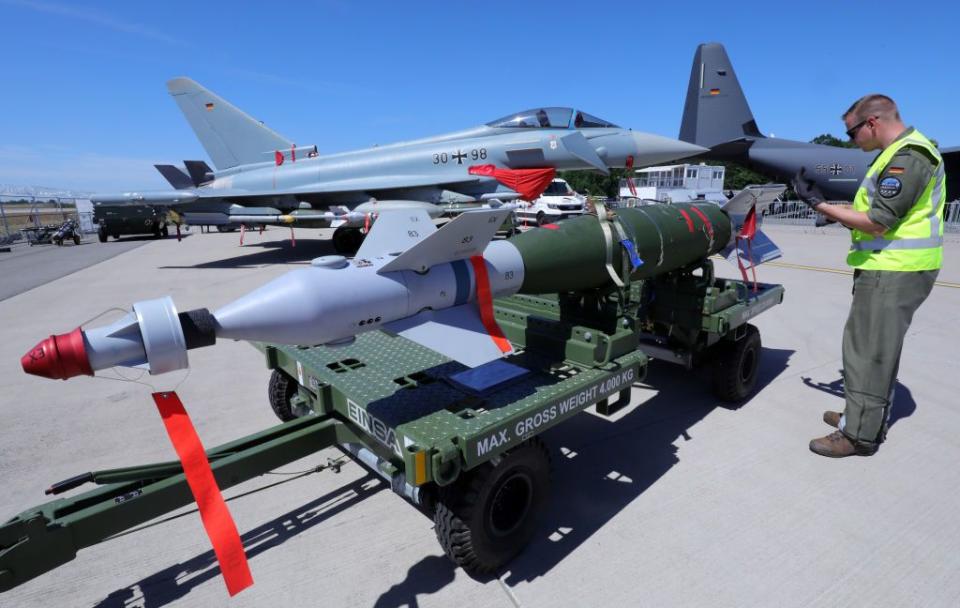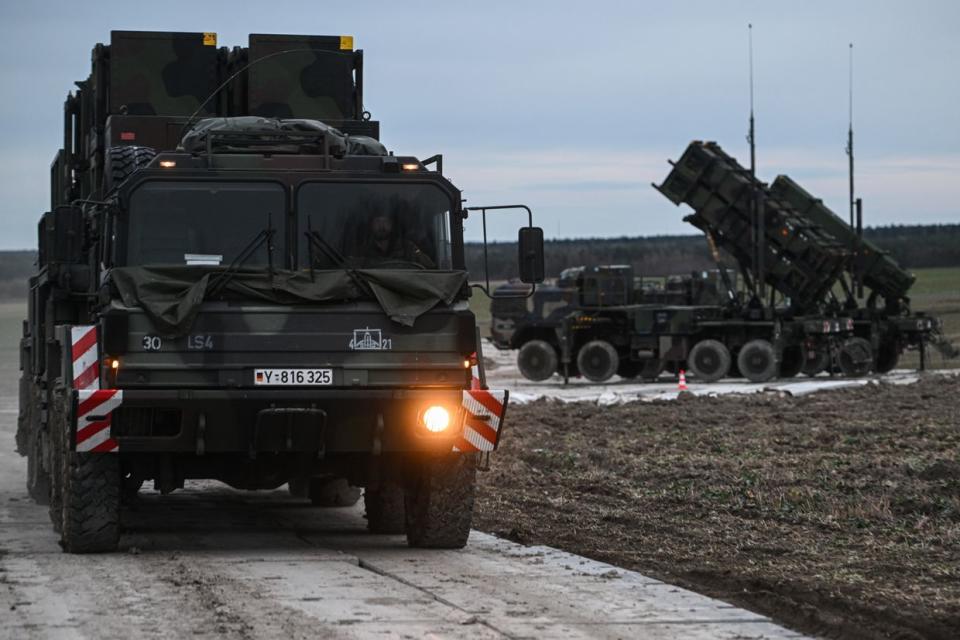Glide bombs help Russia gain land in Ukraine. What makes them so effective?
One critical factor in Russia's recent battlefield successes in Ukraine is its extensive use of glide bombs.
Every week, hundreds of these large, deadly weapons rain down on Ukraine, creating 20-meter-wide craters and obliterating military positions and entire settlements.
Russia has heavily relied on glide bombs in its new offensive on Kharkiv Oblast, clearing the way for ground troops. Since May 10, Russian forces have captured several villages near the border and entered the town of Vovchansk.
Despite their simplicity and low cost, glide bombs have become one of Russia's most effective weapons during the full-scale war, previously contributing to the fall of the strategic city of Avdiivka in February – Russia’s first major gain in nine months.
Experts warn that these bombs could pose an even greater threat to Ukraine, which currently has little defense against them, as Russia is expected to continue its mass deployment of glide bombs to support further offensive operations.


What is a glide bomb?
A glide bomb is a standard air-dropped bomb modified to be launched from a distance rather than directly over the target.
Glide bombs date back to World War II, with the German Fritz X bomb being the first model. The U.S. later developed and used several types of glide bombs in conflicts in Vietnam, Iraq, and Afghanistan.
Russia mainly uses Soviet-era FAB-family bombs, upgraded with a Unified Gliding and Correction Module, which includes wings that flip out as the weapon is released by the aircraft and a satellite navigation system.
Converting a "dumb bomb," an unguided one, into a smart one costs just around $20,000, making it a much cheaper alternative to cruise and ballistic missiles that cost millions of dollars to produce.
"The range of these weapons greatly varies based on their weight, the altitude and speed of the releasing aircraft, but is generally considered not to exceed 50-60 kilometers," according to Federico Borsari, Leonardo Fellow with the Transatlantic Defense and Security Program at the Center for European Policy Analysis.

This range allows Russian jets to stay out of reach of those Ukrainian air defense systems typically deployed near the front lines.
Russian glide bombs can be extremely heavy. The most powerful glide bomb currently used against Ukraine weighs around 1.5 tonnes (3,300 pounds), nicknamed "the building destroyer" by Russian military bloggers.
Moscow has also announced the production of new glide bombs, such as the 3.4-tonne FAB-3000 and the "Drel," which contains cluster munitions.
Ukraine also has glide bombs supplied by Western allies, including the U.S. Joint Direct Attack Munition (JDAM) and Ground-Launched Small Diameter Bombs (GLSDB). These are more accurate and sophisticated than their Russian counterparts, but Ukraine’s arsenal is much more limited.
Read also: Russia’s new Kharkiv offensive pushes Vovchansk to the brink of annihilation
How does Russia use glide bombs in Ukraine?
Russian forces began using glide bombs against Ukraine early last year to compensate for the lack of precision-guided munitions.
"Given that they have these (unguided) bombs in huge quantities and can manufacture guidance modules relatively fast, it's an easy way for the Russians to ensure that their firepower doesn't run out," Fabian Hoffmann, a doctoral research fellow at the University of Oslo who specializes in missile technology, told the Kyiv Independent.
In recent months, Russian troops have ramped up their glide bomb attacks, reportedly firing over 100 across the front lines daily. President Volodymyr Zelensky said that Russia had launched a total of 3,200 guided bombs at Ukraine in April alone.


Glide bombs are most effective against static targets, including bridges, command posts, bunkers, and weapons depots, Borsari told the Kyiv Independent.
"Albeit less accurate than missiles, these bombs are very destructive and are used by Russia to destroy Ukrainian fortifications, positions, and infrastructure in order to facilitate the advance of ground forces, mainly infantry assault teams (e.g., Storm Z units) and mechanized groups that typically suffer enormous casualties."
Some Ukrainian military members say that the key reason for Russia’s swift advances in Kharkiv Oblast is the lack of proper fortifications, for which Kyiv has repeatedly been criticized before. Fortifications would need to be really strong to withstand Russian glide bomb attacks.
"They (glide bombs) are not going to destroy underground bunkers, to penetrate several meters of reinforced concrete… But most of the (Ukrainian) fortifications you see along the front line are probably vulnerable to this type of attack," said Hoffmann.
Read also: 48 hours in Kharkiv, Ukraine’s most-bombed major city
How can Ukraine defend against Russian glide bombs?
Glide bombs are nearly impossible to shoot down because they have heavy iron structures, and they come in extremely fast and from high altitudes, unlike cruise missiles or drones, according to Hoffmann.
One method to intercept a glide bomb is to degrade its GPS signal using electronic warfare, making it miss the target. However, Ukraine’s electronic warfare capabilities are also limited and far more modest than those of Russia.
The best solution for Ukraine to counter Russian glide bombs would be to destroy the launching aircraft before they can release the weapon.

"This can be obtained with longer-range air defenses, such as Patriot and SAMP-T, to shoot down Russian aircraft or force them to fly too far for the use of gliding bombs, and with long-range missiles and attack drones to destroy the aircraft on the airfield," according to Borsari. Kyiv has done both.
Ukraine’s military said it had downed 15 Russian military planes just in February, most likely with Patriot systems. But the string of successes ended in March after Russian forces allegedly managed to destroy two Patriot launchers in Donetsk Oblast. Since then, Ukraine has reportedly had to keep its highly limited arsenal of U.S.-made systems away from the battlefield.
Kyiv has recently increased its calls for more long-range air defense systems, with Zelensky saying that Ukraine needs 25 Patriot systems or their equivalents to protect the whole country. Germany pledged in April to provide Ukraine with one additional Patriot, and other allies are reportedly considering sending more air defense equipment.


Modern aircraft, such as F-16 fighter jets, could also help the Ukrainians deal with glide bombs. Some of the dozens of jets pledged by Western allies to Ukraine are expected to be operational in the summer.
The presence of a sufficient number of F-16s in Ukrainian skies, so far inhabited only by Soviet-era aircraft, would "create a denial area where Russians do not dare penetrate into," said Hoffmann.
"At the same time, to minimize the risk of being targeted, Ukrainian units need to maintain significant mobility, avoid large and prolonged gatherings, and improve the concealment of positions and units," added Borsari.
Note from the author:
This is Dinara Khalilova, I wrote this piece for you. I hope it helped you to make more sense of the recent events on Ukraine's battlefield. To continue reporting on the most important developments of the war, we need your support. Please consider becoming a member of the Kyiv Independent community.
We’ve been working hard to bring you independent, locally-sourced news from Ukraine. Consider supporting the Kyiv Independent.

